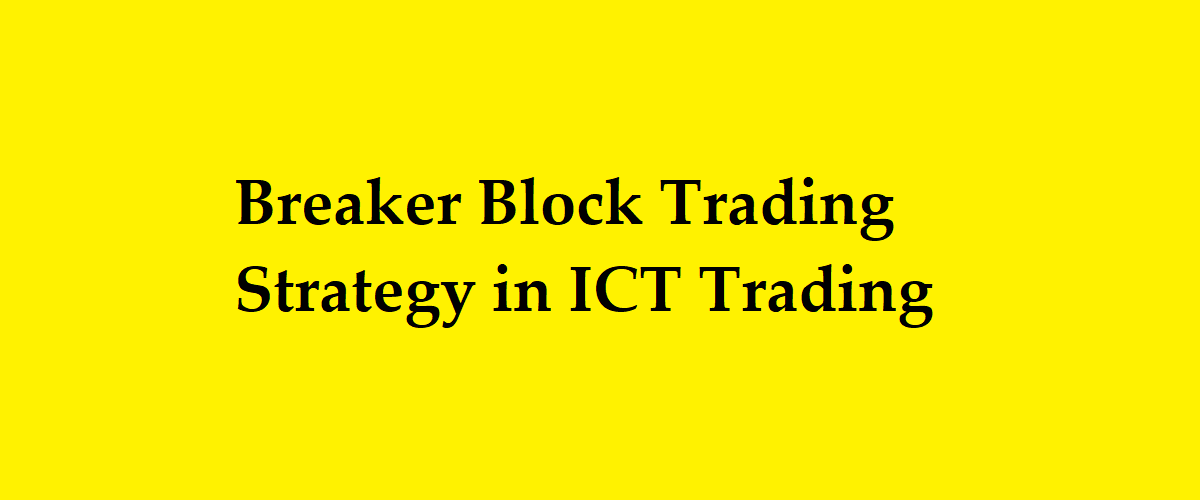The Breaker Block is a powerful price action trading strategy popularized by the Inner Circle Trader (ICT). It focuses on identifying key market structure shifts where liquidity is likely to be taken, leading to high-probability reversals.
This strategy is widely used in forex, stocks, and futures trading, offering traders a systematic way to enter trades with strong risk-reward ratios. In this guide, we’ll break down:
- What a Breaker Block is
- How to identify it on charts
- Key entry and exit rules
- Risk management techniques
By the end, you’ll have a clear understanding of how to apply the Breaker Block strategy in your trading.
What Is a Breaker Block in ICT Trading?
A Breaker Block is a price action concept where:
- Price breaks a previous high/low (liquidity grab)
- Then reverses sharply, trapping breakout traders
- The reversal creates a new imbalance (Fair Value Gap or FVG)
This setup often leads to strong continuation moves in the opposite direction.
Why Does the Breaker Block Work?
- Liquidity Grab: Big players push price beyond key levels to trigger stop losses.
- Trapped Traders: Breakout traders enter late, only to see price reverse.
- Institutional Demand/Supply Zones: The reversal confirms institutional interest.
How to Identify a Valid Breaker Block
To spot a high-probability Breaker Block, follow these steps:
1. Find a Recent Market Structure Shift (MSS)
- Look for a clear swing high or low.
- Price must break this level but fail to continue.
2. Watch for a Strong Rejection Candle
- After the break, a large bullish/bearish candle should reject the breakout.
- This candle often closes beyond the broken structure.
3. Confirm with a Fair Value Gap (FVG)
- The reversal should leave an imbalance (FVG) for additional confirmation.
Example:
- Price breaks a swing high but immediately reverses into a bearish engulfing candle.
- The sell-off creates a bearish FVG, signaling a short opportunity.
How to Trade the Breaker Block Strategy
Entry Rules
- Wait for price to break a swing high/low.
- Look for a strong rejection candle closing beyond the broken level.
- Enter on a retest of the breaker block (previous break level).
Stop Loss Placement
- Place stops beyond the recent swing high/low (beyond the liquidity grab).
Take Profit Targets
- TP1: Previous swing low/high (initial target).
- TP2: Extended imbalance or next liquidity pool.
Breaker Block vs. Other ICT Concepts
| Concept | Breaker Block | Liquidity Void | FVG |
|---|---|---|---|
| Definition | Break & reversal | Price skips levels | Imbalance |
| Usage | Reversal entry | Continuation clue | Confirmation |
Common Mistakes to Avoid
- Trading Without Confirmation: Always wait for the rejection candle.
- Ignoring Market Context: Breaker Blocks work best in trending markets.
- Overlooking Risk Management: Never risk more than 1-2% per trade.
FAQ: Breaker Block Trading Strategy
1. Which timeframes work best for Breaker Blocks?
- Best: 1H, 4H, Daily (higher timeframes have stronger signals).
2. Can Breaker Blocks be used in forex and stocks?
- Yes! The strategy works in any liquid market.
3. How accurate is the Breaker Block strategy?
- No strategy is 100% accurate, but with proper confirmation, it has a high win rate.
4. Should I combine Breaker Blocks with other ICT concepts?
- Yes! Pair it with Order Blocks, FVGs, and Liquidity Pools for stronger setups.
Conclusion: Mastering the Breaker Block Strategy
The Breaker Block is a powerful ICT trading strategy that helps traders capitalize on institutional liquidity grabs. By waiting for breakouts to fail and confirming with rejection candles, you can enter high-probability reversal trades.
Key Takeaways:
✔ Wait for a clear break and rejection.
✔ Use FVGs for additional confirmation.
✔ Always manage risk with proper stop losses.

1 thought on “Breaker Block Trading Strategy in ICT Trading”